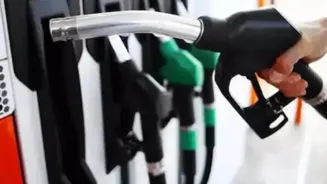What is the story about?
Motor insurance claims have surged by 33% during the monsoon, driven by increased incidents of engine and electrical damage, according to new data released by Policybazaar. The rise in claims highlights growing weather-related
risks and the persistent gap in protection, especially in smaller cities across India.
The data shows that the average motor insurance claim during the monsoon months (June to September) has risen from ₹30,000 to ₹40,000, largely due to engine failure and electrical system breakdowns caused by waterlogging.
Despite the increase in seasonal damage, only 20% of vehicle owners have opted for engine protection add-ons. This means 80% remain exposed to some of the most expensive and common monsoon-related risks.
While nearly half of the policyholders have zero-depreciation cover, the remaining face higher repair bills.
However, the adoption of Roadside Assistance (RSA) has shown encouraging signs. Nearly 75% of customers have opted for the RSA add-on, which offers support during vehicle breakdowns caused by water damage or electrical faults.
The burden of monsoon-related claims is especially high in non-metro areas. Between 2023 and 2025, around 74–75% of such claims have come from Tier-2 and Tier-3 cities.
While metro cities like Delhi, Mumbai, Chennai, Pune, Nasik, Himachal, and Bengaluru have the highest number of reported incidents, the scale of claims from non-metros points to wider infrastructure vulnerabilities and lack of resilience in smaller towns.
The volume of claims has also increased year on year. Motor insurance claims rose 3.2% in 2024 and 9.4% in 2025, resulting in an overall 12.9% spike over the past two years.
Hatchbacks continue to dominate the claims data, accounting for 54% of
monsoon-related claims, followed by sedans at 26% and SUVs at 20%. SUVs, though less frequently involved, incur the highest average repair cost of ₹60,000, compared to ₹45,000 for sedans and ₹35,000 for hatchbacks.
Commenting on the findings, Paras Pasricha, Business Head of Motor Insurance at Policybazaar.com, said, “This year, the rains have exposed more risks than resilience. What's more concerning is that 80% of people remain unaware of critical protection covers like engine protection—a gap seen across both metros and non-metros.”
He added, “To be better prepared for India’s monsoon challenges, it is crucial for vehicle owners to opt for essential add-ons like engine protection cover, roadside assistance, and zero depreciation cover. These not only reduce financial burden during unexpected breakdowns but also offer much-needed peace of mind in adverse weather conditions.”
The data shows that the average motor insurance claim during the monsoon months (June to September) has risen from ₹30,000 to ₹40,000, largely due to engine failure and electrical system breakdowns caused by waterlogging.
Despite the increase in seasonal damage, only 20% of vehicle owners have opted for engine protection add-ons. This means 80% remain exposed to some of the most expensive and common monsoon-related risks.
While nearly half of the policyholders have zero-depreciation cover, the remaining face higher repair bills.
However, the adoption of Roadside Assistance (RSA) has shown encouraging signs. Nearly 75% of customers have opted for the RSA add-on, which offers support during vehicle breakdowns caused by water damage or electrical faults.
The burden of monsoon-related claims is especially high in non-metro areas. Between 2023 and 2025, around 74–75% of such claims have come from Tier-2 and Tier-3 cities.
While metro cities like Delhi, Mumbai, Chennai, Pune, Nasik, Himachal, and Bengaluru have the highest number of reported incidents, the scale of claims from non-metros points to wider infrastructure vulnerabilities and lack of resilience in smaller towns.
The volume of claims has also increased year on year. Motor insurance claims rose 3.2% in 2024 and 9.4% in 2025, resulting in an overall 12.9% spike over the past two years.
Hatchbacks continue to dominate the claims data, accounting for 54% of
Commenting on the findings, Paras Pasricha, Business Head of Motor Insurance at Policybazaar.com, said, “This year, the rains have exposed more risks than resilience. What's more concerning is that 80% of people remain unaware of critical protection covers like engine protection—a gap seen across both metros and non-metros.”
He added, “To be better prepared for India’s monsoon challenges, it is crucial for vehicle owners to opt for essential add-ons like engine protection cover, roadside assistance, and zero depreciation cover. These not only reduce financial burden during unexpected breakdowns but also offer much-needed peace of mind in adverse weather conditions.”
Do you find this article useful?











